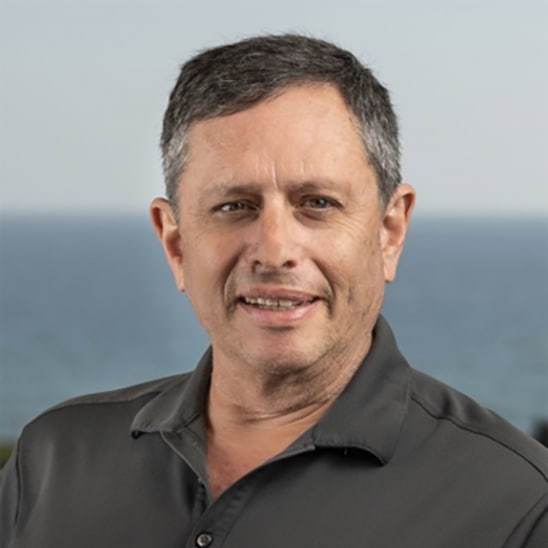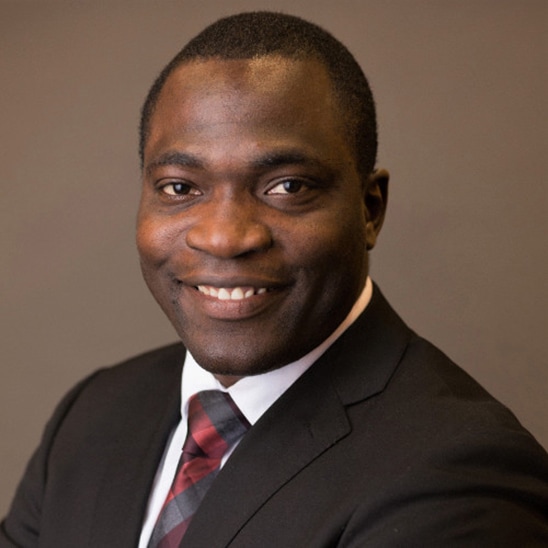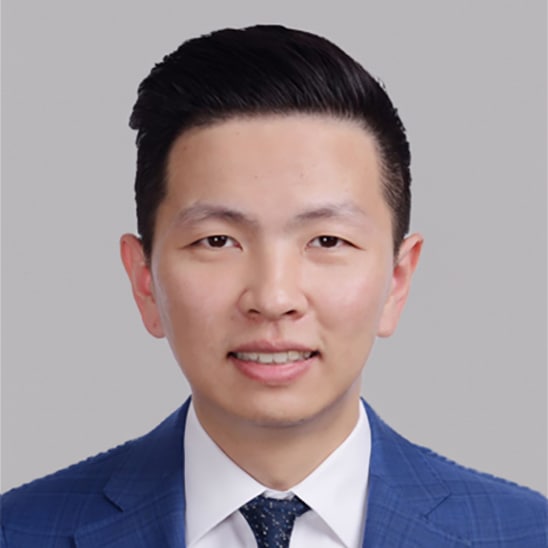Earth is often referred to as “the water planet.” When viewed from space, water – in both liquid and frozen form – covers 75% of Earth’s surface.1 However, despite its abundance, only approximately 3% of Earth’s water is fresh water.2 Of that, roughly 1.2% is safe drinking water; the remainder is stored within glacial structures and permafrost areas.2
The United Nation’s (UN) World Water Development Report, which was published in 2023, reveals that from 2020, 26% of the world’s population did not have access to safe drinking water, and 46% lacked access to basic sanitation.3
In a recent interview, Agilent spoke to three global experts whose research is helping to protect the world’s usable water from different environmental contaminants, ensuring that more communities can have access to safer water:



Environmental contaminants in our water systems
Working at their respective institutions, Dr. Keller, Dr. Adeleye, and Dr. Huang have been investigating the presence and interactions of various environmental contaminants over the years and how they affect our water supplies.

Based at the University of California in Santa Barbara, Dr. Keller commented, “Over the last 30 years, my research focus has been on numerous emerging contaminants. For example, I have worked on organic substances such as chlorinated solvents, pesticides, pharmaceuticals, chemicals, and personal care products, PFAS, as well as some materials that are inorganic like microplastics and metals such as nanoparticles. Our objectives are to detect,
eliminate or remediate these environmental contaminants to make our water supplies safer.”
According to Dr. Adeleye at Columbia University, contaminants such as microplastics and PFAS are gaining his attention as well as the attention of regulators and the water industry.
Dr. Adeleye explained, “PFAS is an acronym for per and polyfluoroalkyl substances, which are ubiquitous in our environment. My research currently focuses on better understanding the interactions of PFAS, and other environmental contaminants, to the point where we can generate enough knowledge to devise lasting solutions to such environmental challenges.”
Since 2019, Dr. Huang has worked at the Institute of Environmental Ecology at Shenzhen Graduate School, Tsinghua University, China.
“Our research group is especially focused on emerging contaminants, which are commonly detected in water systems nowadays. These emerging contaminants are typically low in concentration but come with high ecological risks. The purpose of our research is to advance our knowledge of the fate of these emerging contaminants in our waterways, their transport, and understand the risks and potential impact of their presence to different ecosystems,” Dr. Huang commented.
Contributing toward better treatment and use of water
One of the UN’s sustainable development goals is to ensure access to water and sanitation for all. However, more work and rapid investment is needed if they are to achieve universal and equitable access to safe and affordable drinking water for all by their target of 2030.4

Key scientific challenges that Dr. Keller’s lab is trying to solve include how to keep drinking water safe, how to treat water if contamination does occur, and how to improve technologies that are being used for water supplies.
“It’s important that all these challenges are addressed so that safer drinking water is secured at local and regional levels in developing as well as already developed countries,” said Dr. Keller.
Dr. Adeleye’s work contributes toward more modern ways to treat water so that it is safer for reuse. “Traditional water treatment technologies tend not to be very effective at eliminating emerging contaminants,” said Dr. Adeleye.
His research is supplementary in helping other researchers develop more advanced technologies to improve water systems. “The work we are doing is informative to better remove emerging contaminants during water treatment processes. Specifically, we inform other researchers as well as people who are developing new technologies on how to effectively remove these contaminants to make water safer for everyone, and to ensure that locations relying on water reuse can have it done in a safe manner going forward,” explained Dr. Adeleye.
To ensure effective treatment of water supplies, scientists must be equipped with the latest innovations and services to conduct their research. On this topic, Dr. Huang remarked, “Advancing our knowledge and understanding of emerging contaminants poses huge analytical challenges, especially in terms of developing analytical methods.”
He added, “Recently, together with Agilent Technologies, we developed useful method techniques to analyze different environmental contaminants at low concentrations.5 One of these examples, which I am very proud of, is that we have developed a quantitative analytical method for microplastics in water environments, which can directly analyze the environmental relevant concentration of microplastics with particle sizes lower than 5μm.6 By applying this method, we have saved valuable lab time and our efforts have provided us with useful information in terms of evaluating certain risks of microplastics in water to ecosystems.”
Partnering with Agilent University Relations
In 2015, Dr. Keller’s lab at the University of California received an Agilent Thought Leader Award in support of research into the use of nanoparticles in agriculture and the environmental consequences.7 During that time, both Dr. Adeleye and Dr. Huang were researchers in Dr. Keller’s group and benefited from using state-of-the-art analytical instrumentation, which was donated by Agilent as part of the award.
“The Agilent Thought Leader Award has been great! The ability to use key instruments like single particle ICP-MS and an LC/MS/MS allowed us to detect many emerging environmental contaminants at very, very low concentrations. It has enabled us to be at the forefront of science with great analytical capabilities, and in some cases, be one of the first to discover how to find nanoparticles in wastewater, for example,” remarked Dr. Keller.
Dr. Adeleye, who was a postdoctoral scholar in 2015 at Dr. Keller’s research lab, commented, “Overall, the Agilent Thought Leader Award program enabled me to increase my general lab productivity and hone key analytical skills on ICP-MS and LC/MS/MS instruments. On reflection, this has contributed to what I am doing and where I am today as an independent researcher at Columbia University.”
In addition to having an opportunity to work in Dr. Keller’s research lab when Dr. Keller received the Agilent Thought Leader Award, Dr. Huang won an Applications Core Technology University Relations (ACT-UR) award in 2020.

Pictured on the right-hand side, Dr. Huang receiving the Agilent ACT-UR award in 2020.
“Receiving the Agilent ACT-UR award was extremely helpful for us because we were able to advance our research into emerging contaminants. For example, we were able to better analyze microplastics, metal nanoparticles, as well as PFAS in water matrices at very low concentrations and with little sample preparation required, which enhanced our productivity and efficiency in the lab,” explained Dr. Huang.
Continuing to bring great science to life in water research
Agilent customers like Dr. Keller, Dr. Adeleye, and Dr. Huang work diligently to bring great science to life and support society. Their complex research efforts are essential for obtaining a deeper understanding of how environmental contaminants interact in our water systems while trying to mitigate their impact, all in hope of ensuring cleaner and safer water for all.
DE98434365
- The Water Planet - NASA
- Rivers and Streams (nationalgeographic.org)
- The United Nations World Water Development Report 2023: partnerships and cooperation for water - UNESCO Digital Library
- Water and Sanitation - United Nations Sustainable Development
- Tan X. Multiple interactions steered high affinity toward PFAS on ultrathin layered rare-earth hydroxide nanosheets: Remediation performance and molecular-level insights. Water research (Oxford). 02/2023; 230:119558. doi: 10.1016/j.watres.2022.119558.
- Liu Z. Quantifying the dynamics of polystyrene microplastics UV-aging process. Environmental science & technology letters. 01/2022;9(1):50-56. doi: 10.1021/acs.estlett.1c00888.
- Agilent | Agilent Technologies Presents Thought Leader Award to Environmental Researcher Dr. Arturo Keller of U.C. Santa Barbara